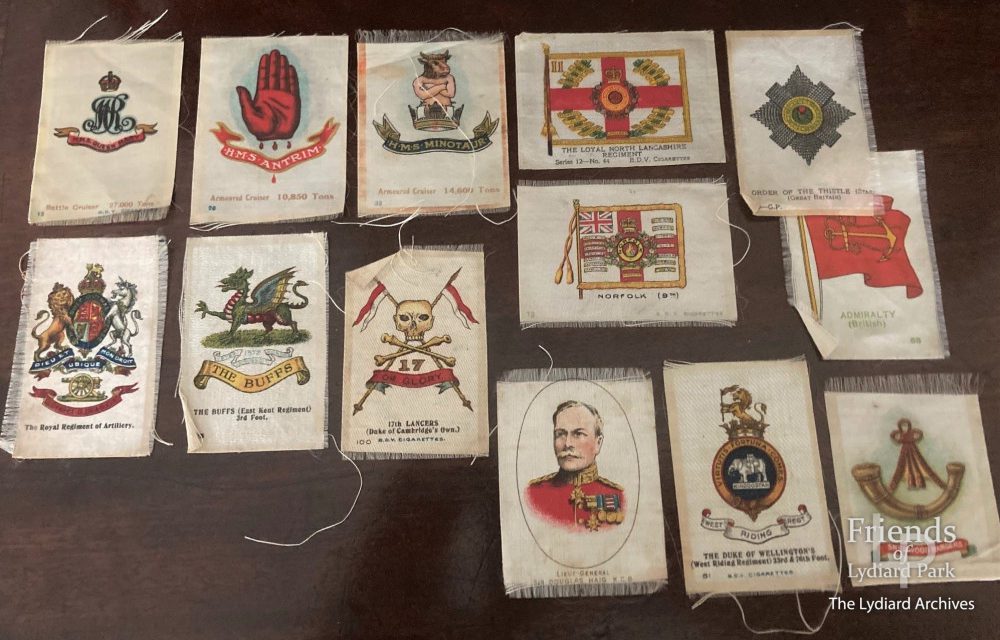

The Lydiard Archives has launched with three fascinating featured collections:
World War 1 – https://www.thelydiardarchives.org.uk/collection/world-war-i
Stained Glass – https://www.thelydiardarchives.org.uk/collection/stained-glass
Recipes and remedies – https://www.thelydiardarchives.org.uk/collection/recipes-and-remedies
The First World War collection brings together photographs, objects, diaries and letters that reveal the impact of the war on the community of Lydiard Tregoze, from a photograph of Private John Titcombe of Hook, taken in France and printed as a postcard, to cigarette silks that were popular collectibles at the start of the War.
St Mary’s Church Lydiard Tregoze has a remarkable survival of medieval stained glass which, together with the wall paintings, create a stunning display on entering the church. In the Lydiard Archives you can find out much more about both the church glass but also the glorious painted window in Lydiard House, which is a remnant from the earlier older manor house on the site. Dated to 1630, it contains over 100 diamond shaped ‘quarries’ (pieces of glass) exquisitely painted in bright enamel colours. Each is different. They depict mermaids, centaurs and satyrs; people hunting; exotic fruit and flowers; and wild and domestic animals. The majority are copied from 16th and early 17th century prints with the glass being painted on both sides to enhance the three-dimensional effect. It truly is one of the treasures of Lydiard!
The Recipes and Remedies collection focusses on the remarkable recipe book of Lady Johanna St.John which is held in the Wellcome Collection. It is a fascinating collection of seventeenth-century remedies and curatives. A blend of superstition and science, the remedies are grouped by the condition they are intended to cure – from The King’s Evil to the Plague, Canker of the Breast, or the Green Sickness. Many recipes depend on ingredients only available from the London apothecaries (unicorn horn, for one) while others contain herbs that would have been found in any cottage garden. Many recipes were handed down through generations or exchanged between friends, and poignant margin notes validate the efficacy of the remedies, citing both the condition and the person who was cured. Cures from the book will be featured on the Friends of Lydiard Park website in the living history section in the following months.